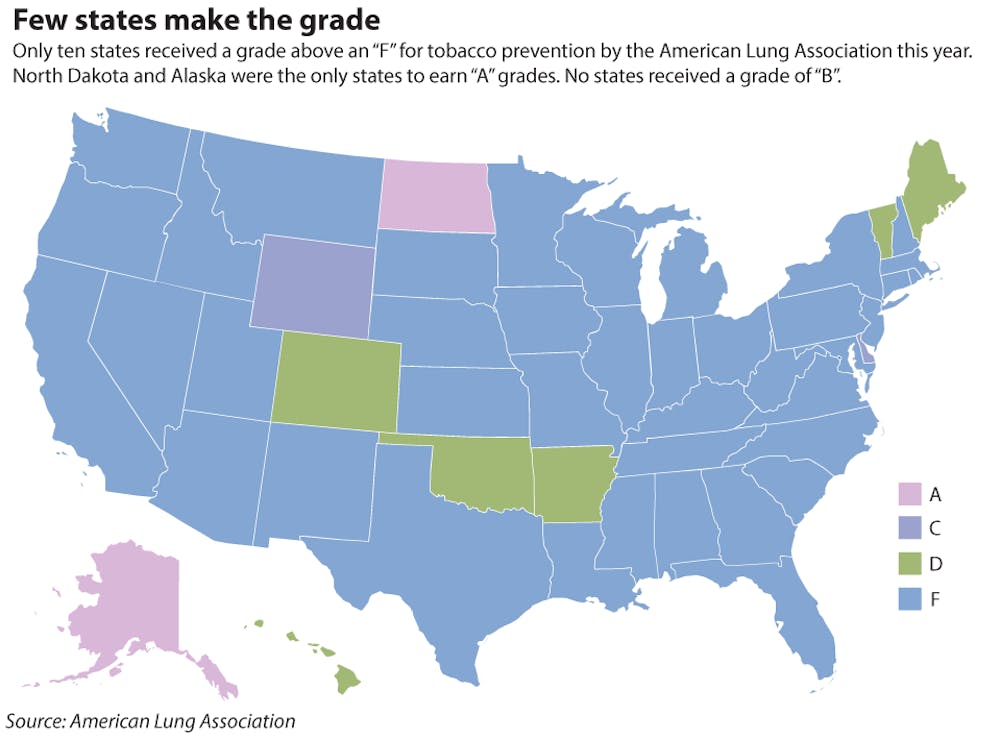Rhode Island received an F in “tobacco prevention” and a D in “cessation coverage,” despite receiving A grades for both its “smokefree air” and “cigarette tax,” in the American Lung Association’s annual report published Jan. 22. The report attributed the low grades to insufficient funding for anti-tobacco policies.
Karina Wood, ALA director of public policy in Rhode Island, expressed disapproval of the state’s low investment in tobacco prevention. “When you consider that we make somewhere between $150 to $200 million per year from tobacco tax revenue, and yet we give not even $400,000 (to tobacco prevention initiatives),” it is obvious the state’s efforts are insufficient, she said.
Investment in the Rhode Island Smokers’ QuitLine — a hotline that smokers can call for support and information on quitting — is especially low, Wood said. According to the ALA report card, Rhode Island invests only $1.32 per smoker, though the Centers for Disease Control and Prevention recommends an investment of $10.53.
“We do have a mandate in Rhode Island that all healthcare insurers cover cessation medications and counseling,” Wood said, noting that this regulation raises the state’s cessation grade from an F to a D.
The state cigarette tax is the third highest in the nation, Wood said, adding that “cigarette taxes have been proven to bring down the smoking rate.” The ALA is supporting a bill this year to further increase the tax and dedicate the added revenue to tobacco prevention.
The Smoke-free Workplaces Act of 2004 is a large reason for Rhode Island’s high grade in “smokefree air,” though exceptions for casinos and gambling establishments need to be closed, Wood said. The ALA also believes regulation of hookah bars should be enforced, she added.
“Rhode Island is not backsliding,” said Erica Collins, media and communications coordinator for the Rhode Island Department of Health. But there are areas that need improvement, she said, adding that “we have yet to get an institution of higher learning on board to passing a 100 percent tobacco-free campus policy, but that is something we are in the process of addressing.”
“In terms of economic costs, they’re very high,” said Wood, noting that smoking is the “number one preventable cause of death and disease in the state.”
The consequences of smoking cost the state $506 million in healthcare expenses each year, Collins said. “This does not include health costs caused by exposure to secondhand smoke, smoking-caused fires, smokeless tobacco use or cigar and pipe smoking,” she added.
And smokers take more sick days off from work, resulting in productivity losses for employers, Wood said, adding that the costs of prevention are low in comparison to the costs of smoking.
In hopes of drumming up support for the issue during this legislative session, the ALA also provided its report to all of the state’s legislators.

ADVERTISEMENT




